|
Monday, September 10, 2012
Progress Notes
I received the following letter recently from David Dyer, a resident of Houston, Texas, who is on the board of directors for the Harris County Historical Society:
My grandfather, John P. (Jack) McPherson was the construction superintendent on the Bagnell Dam project. He was with Stone & Webster for 40 years (photo 01).
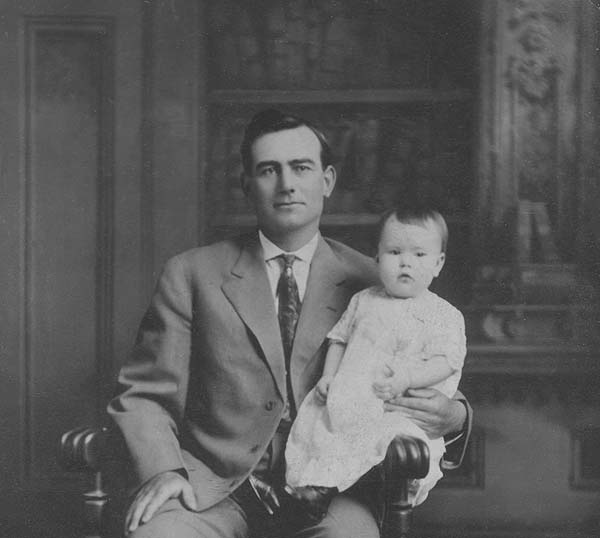
01 John Patrick McPherson - 1913
There is an interesting but, of course, unverifiable story that he used to tell and I thought I might pass it on to folks who might enjoy it. He hired a lot of men to work on the dam, but one of them looked familiar to him. After a few days, my grandfather realized that he had hired Pretty Boy Floyd, the popular bank robber (photo 02).
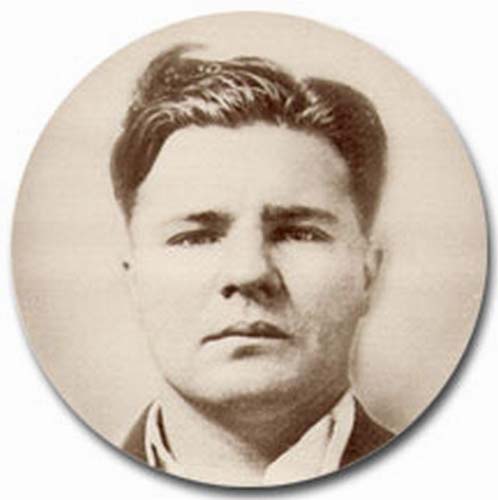
02 Charles Arthur "Pretty Boy" Floyd
My granddad feared no man; he had been a professional heavyweight boxer and most of the men were afraid of him. He went up to Floyd and said, “Son, I know who you are. Now get going.” Floyd thanked him and left quietly. So, my granddad had a chance to turn him in, but let him go instead.
He would not have feared Pretty Boy Floyd. He had been a professional boxer under the name of Mac McPherson and he was a heavyweight at about 6 ft. 195lbs., rather large for those days. But he must have had a soft heart for the bank robber because he told him to leave rather than turn him in. It probably would have been safer to call the police and let them deal with the situation, but that was not his way. I recall that Floyd worked there for several days as a laborer before my grandfather finally recognized him.
My mother, who was born in 1915, was around 15 when it happened. When her dad came home that day (they lived in Jefferson City) he told the family that he had hired Pretty Boy Floyd as a worker, but was going to let him go. My mom wanted to go to the construction site to meet him, but my grand dad had enough common sense to not allow that.
|
Thanks David for this interesting story about the famous Missouri criminal, “Pretty Boy Floyd.” I had heard anecdotes from my childhood about him, whose given name was Charles Arthur Floyd. Rumors have persisted to this day that Floyd, who was raised in Oklahoma, was in Miller County once in awhile. I have heard several "tales" about Floyd in Miller County but it is difficult now to verify them so many years after they were said to have happened. My mother remembers one day that Floyd was sighted driving through Tuscumbia. It was known he had ties of some kind with people who lived on Bear Creek. Charlotte Beard, who for several years was a writer for the Autogram, lived near Bear Creek. In one of her Autogram columns she wrote the following:
Charlotte Beard’s Memories of Pretty Boy Floyd (photo 03)
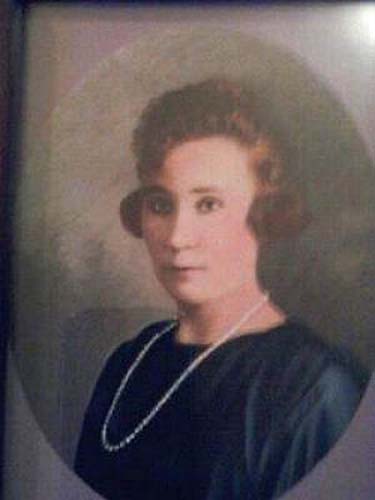
03 Charlotte Beard
I’d much rather have wildcats and bears than to think a fellow by the name of Pretty Boy Floyd once hid in this valley. Lots of people believed he was kept here by some people that knew him well for some time.
If you remember, they couldn’t find out where he was and at that time the people he knew didn’t have to work any more. It seemed they had plenty of money.
At that time there was just one room and an attic. I have been in the building and it was a perfect place to hide in. The building burned down after we moved here 37 years ago. There was no road, except if you had an old fashioned Ford car with high wheels, you might drive it over rocks, brush and through Wildcat Creek with some deep places. You would get close enough you could walk up to the log cabin. No one visited there very often, so you see it could be possible. Anyway, many believed it to be. They even took pictures from airplanes of this valley. So you see, the Wildcats had pretty good company, I would say. At that time we lived the second house down from this valley. So we could hear lots of rumors.
The history of Floyd’s escapades and crimes is well told in the book, Somewhere In Time (Missouri Department of Corrections, Copyright 2004 p. 136):
Somewhere In Time
Missouri Department of Corrections
Copyright 2004
p. 136
Pretty Boy Floyd (photo 04)
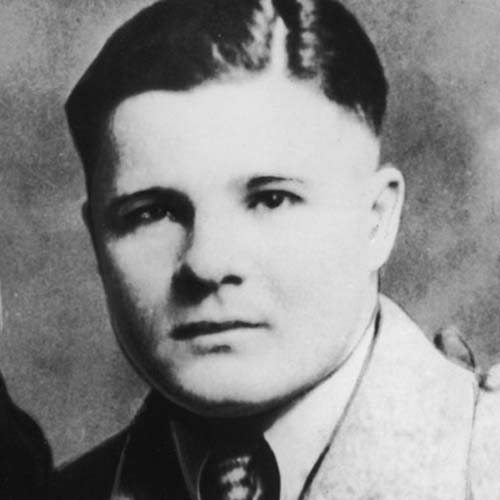
04 Charles "Pretty Boy" Floyd
Charles Arthur “Pretty Boy” Floyd was no stranger to Missouri. On December 18, 1925, he had arrived at the penitentiary after pleading guilty to a $12,000 St. Louis payroll robbery. Prison records list this as his first offense. Later, when Floyd became famous, penitentiary officials remembered him as having been a “good” prisoner.
One officer, Captain Hargus, recalled:
“On the whole, he was a good prisoner…but that doesn’t mean he was a model prisoner. He would steal things like most of the convicts but he didn’t go out of his way to cause trouble. As far as I know, he was only in trouble one time. At the morning call, Floyd was a little slow in arising.
One of the guards swore at him, and Floyd, who was always hot tempered, knocked the guard down. We put him in I Hall solitary for a few days.”
Harvey Hayes managed the penitentiary cold storage plant and once reminisced about Floyd to a reporter:
“Floyd used to come after ice and he would take advantage of the opportunity to steal potatoes which the convicts used in making whiskey. The potato room was not visible from my office and while I was sure he was stealing potatoes, I couldn’t catch him at it.
I tried to be out in the hall when he came but he was smart and came at a different time every day. Finally, I saw him pick up a bag of potatoes, carry them out and throw them in a wheelbarrow with a block of ice.
Floyd saw me coming after him, dropped the wheelbarrow and started running. He was rounded up in the yard. He acted insolent and I batted his ears a few times.”
Floyd was first put to work in the prison kitchen and later given a job in the machine shop as a plumber’s helper. He kept to himself, was quiet, and caused no other trouble.
Floyd was released from the penitentiary without fanfare on March 7, 1929, under the seven-twelfths rule. But by 1933, Floyd was wanted in several states and known to police as “the most dangerous man alive.” In Missouri, he was wanted for three murders.
Floyd filed ten notches in his pocket watch to mark the number of men he had killed. Police officers were warned that he was heavily armed with machine guns and wore a steel vest for protection.
On June 14, 1933, two Columbia, Missouri law officers were brutally shot. Sergeant Ben Booth of the Highway Patrol and Sheriff Roger Wilson lay dead (photo 05).
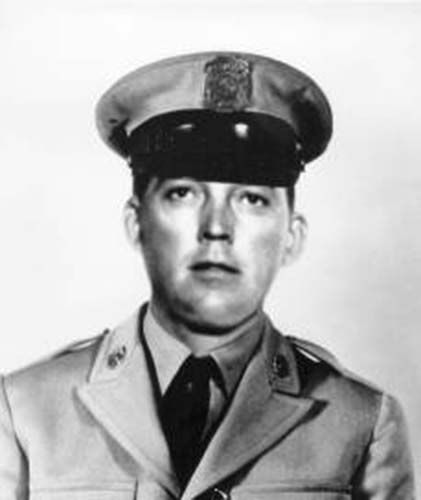
05 Sergeant Benjamin O. Booth
The bounty on Floyd rose to $6,000. Then three days later, on June 17, a massacre at Union Station in Kansas City shocked the nation. Frank Nash, a famous Oklahoma outlaw, was being returned to the federal prison at Leavenworth, where he had escaped three years earlier (photo 06).
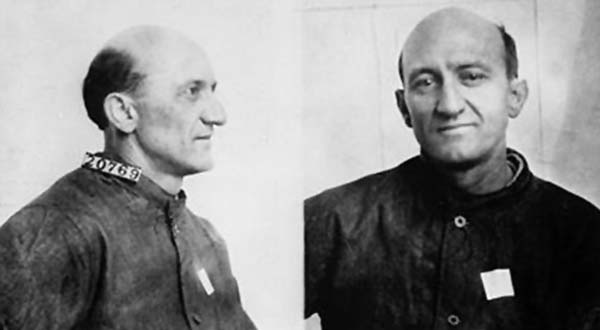
06 Frank Nash
He was surrounded by federal agents and state law officers.
Suddenly, a roar of machine gun fire erupted, seeming to come from everywhere. Nash crumpled to the floorboard of a car, dead, and four of the lawmen were fatally shot.
A massive manhunt ensued immediately lead by the U.S. Department of Justice. “Pretty Boy” Floyd, Adam Ricchetti and Verne Miller (photos 07 and 08) were identified as the killers.
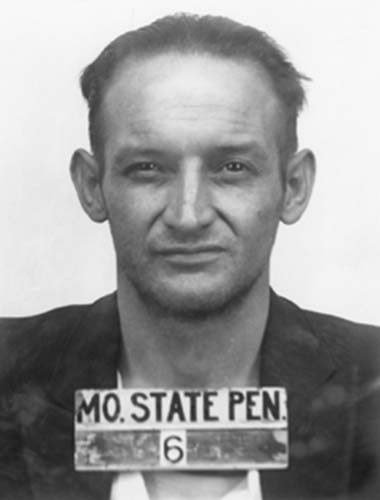
07 Adam Richetti
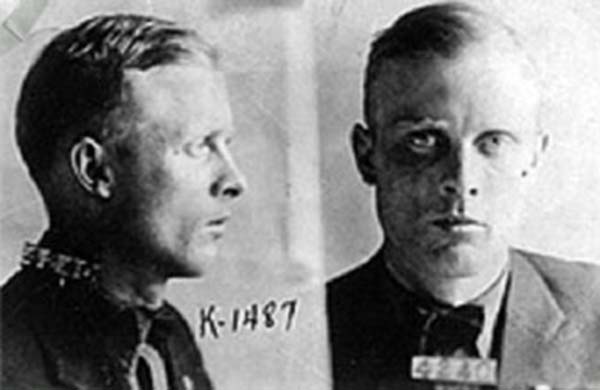
08 Verne Miller
In all, fifteen people were implicated in the plot, thought to have been an attempt to free Nash.
Ricchetti was apprehended. Miller died at the hands of a fellow gangster. Meanwhile, Floyd managed to elude law officers. It was rumored that he might be hiding somewhere in Missouri, and for weeks frightened citizens all over the state reported real (or imagined) Floyd sightings. On October 2 a man resembling Floyd was seen in Iowa and was, reportedly, headed toward Missouri. Road blocks were set up on bridges at Boonville, Hermann, and Louisiana.
On October 14, bridges in St. Charles were blocked after two Floyd sightings in that town.
The desperado showed up on the farm of widow Conkle… an Ohio woman… tired, dirty and hungry. He asked her politely to fix him a meal, which she did. He told a story of having gotten lost while hunting. When Mrs. Conkle’s brother, Stewart Dyke arrived, Floyd asked him if he would drive him to Youngstown. Dyke declined, but agreed to take him to Clarkson. When they were preparing to drive away, two cars full of officers swiftly wheeled into the yard. Floyd jumped out of the car, pulled a gun and made a run for the corn crib. Instead of remaining barricaded there, he made a mad dash towards the woods.
Three federal agents, headed by Melvin Purvis of the Department of Justice, and four local lawmen, gave chase (photo 09).
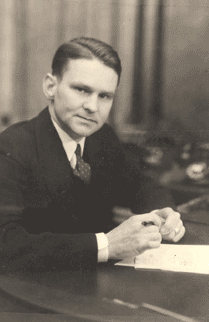
09 Melvin Purvis
Purvis yelled, “Halt!” Floyd did not. Purvis ordered the men to fire. Four bullets struck Floyd. Dying within minutes, “the most dangerous man alive” met quick, sure justice.
Adam Ricchette, his accomplice, was sent to Missouri State Prison. Early on Friday, October 7, 1938, he was led, blindfolded, into the gas chamber. As prison officials strapped him into the chair, he muttered, “What have I done to deserve this?”
All day, federal officials had tried to pry details out of the gangster regarding the Union Station massacre, but Ricchetti remained sullen and tight lipped. Nobody would ever know the true details of that day.
Finally, the door slammed shut on the doomed man and forty witnesses, including the son of one of the victims, watched as the fatal gas was released. Ricchetti gulped, then uttered one last cry. Four minutes later, he was declared dead.
Thus the ubiquitous Pretty Boy Floyd, who seemed to be immune to all the efforts of the Missouri Law enforcement units to capture him, finally met his end. And according to the information sent us by David Dyer and Charlotte Beard quoted above as well as my own mother, he had a presence at times in our own Miller County.
We finally got some rain this week and it seems the drought may have ended. However, it was quite severe while it lasted. An article I found on the website, St. Louis Today featured the farm of Iberia cattle rancher, Greg Lee, regarding his difficulties taking care of his large cattle herd (photo 10).
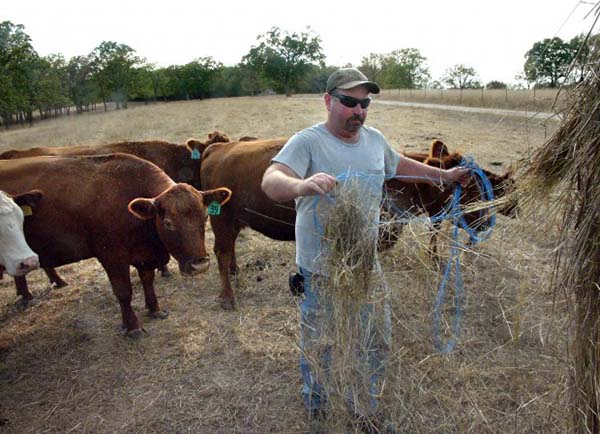
10 Greg Lee
I was interested because Greg’s farm once belonged to my wife’s grandparents, Frank and Ellie Steen, located about six miles west of Iberia on Highway 42.
The farm originally was homesteaded by John Williams, great great grandfather of my wife, Judy. You can read the history of John Williams at this previous Progress Notes.
Copied below is the article from St. Louis Today which describes just how severe the drought has been:
St. Louis Today
IBERIA, MO. • Cattle rancher Greg Lee and his family usually have an incredible view of central Missouri hills and pastures from their home. But this year is unusual.
Beyond the back deck there's a bone-dry pond that looks like the surface of another planet. There's no grass in the fields to feed 400 head of cattle. Even well beyond the view, Missouri's pastures are in worse condition than any other state in the continental U.S., according to a study of national statistics.
"It's like the whole world is tan," said Lee, 44. "This is something guys my age haven't ever seen before."
Missouri is second only to Texas in the number of farms — 106,500 — because of small cow-calf operations in rugged parts of the state. Now, as the historic drought continues, scant hay, bald pastures and heavy heat are pressuring many farmers in the state's $3.6 billion cattle industry to thin their herds because they can't feed all of the animals and make a profit.
Hit-and-miss drizzle over the weekend didn't help, and it's unclear whether remnants of Tropical Storm Isaac will have much of an effect. Meteorologists say it would take anywhere from 9 to 15 inches of rain over an extended period of time to mitigate Missouri's drought conditions.
The drought, which hit in May, has grown in intensity, with virtually the entire state considered to have "extreme" drought conditions.
Only the leaves look alive, which Lee said has led some ranchers old enough to remember previous droughts to cut down undesirable trees to feed cows. Lee hasn't tried that, but he and many other farmers are dipping into dwindling stacks of hay.
One evening last week, Lee loaded a big round bale on the back of a pickup and unrolled the hay in the dry pasture. An aggressive parade of cows, calves and a few bulls vied for the fresh food.
He keeps a careful inventory, as hay is usually fed when there are snow flurries, not 90-degree heat. For now, Lee expects to sell off half the herd so the other half can have food for the winter.
"It makes you want to break down and cry," he said, "but it wouldn't do no good."
Though there is stress, continued high beef prices will keep most players in the game, said Ron Plain, an agriculture economist at the University of Missouri-Columbia who has studied national statistics on pasture conditions.
But he added: "A lot of cattlemen are going to have to change what they do."
Farmers can either find a way to feed animals through the winter with hopes of green pastures in spring — or sell their livestock now.
Feeding is not an easy option. After good hay crops in recent years, there is precious little to buy today. Drought conditions ravaged the latest cut in June. Last year, desperate farmers in Texas, dealing with a drought there, bought hay in Missouri and other states. Meanwhile, feed corn is expensive, with corn and soybeans trading at record highs.
There's not much for the cattle to graze on in fields, with the double punch of high heat and little rain. According to a U.S. Department of Agriculture report released Monday, 1 percent of Missouri pastures were rated "fair"; the remaining 99 percent were considered "poor" or "very poor."
Water has also been hard to find as many creeks, ponds and wells have gone dry.
"If we get some rain in the next two or three weeks, it would make a lot of difference," said Ken Chitwood, 65, a farmer near Rolla. "We are hoping this hurricane, if it comes far enough west, feeds moisture into the air in this area."
Scott Truett, a National Weather Service meteorologist, said it was too soon to tell how much rain Isaac will bring to Missouri and to which parts of the state.
If it brings significant rainfall to the region, he said, "that could recharge rivers and ponds to a certain extent. But the deficit is so large that it's going to take several rainfalls over several weeks and months to get us back to more normal conditions."
CATTLE SELL-OFF
Last week, 30,571 cattle were sold in Missouri, compared to 22,387 for the same week in 2011, according to sales tracked by the state Department of Agriculture.
Despite sell-offs, cattle prices have been stable because inventory is relatively small. The 97.8 million national cattle population nationally is the lowest in decades, according USDA figures.
Plain said consumers should expect to pay less for ground beef in the second half of 2012, as slaughterhouses buy up older, less productive cows that farmers don't want to pay to feed. But a smaller herd of cows means fewer calves being born to replace them, leading to expected higher prices for beef in 2013 and 2014.
Farmers, of course, would like to ride the wave of good prices.
"Cattlemen don't want to part with their cows, but you gotta find something for them to eat," Plain said. "And if you can't, you gotta sell. There is a limit on how skinny they can get. They stop reproducing."
Last week, Missouri sale barns from Farmington to Joplin were packed with more cattle than usual. In Vienna, David Patton, co-owner of South Central Regional Stockyards, stood center ring as hundreds of cattle were auctioned off.
"They wouldn't be here if it wasn't dry!" Patton yelled to the crowd about six healthy heifers.
Regarding a different, skinnier, lot, he yelled: "That's what you call sorry!"
Sale observers said the cattle, typically sold by weight, were 10 to 15 percent lighter than normal, which can be the difference between a profit and a loss.
Many of the cattle were headed to slaughterhouses, but other buyers shipped animals to places such as northern Missouri to feed on corn silage salvaged from a ruined corn crop.
Gov. Jay Nixon in July announced a program to help farmers get water by deepening wells and other options. Nearly 6,000 applications were approved, totaling about $29 million in assistance.
One farmer, Jeff Hendley, was recently approved. Though many of the cattle being sold off are older, Hendley dumped a third of his herd, about 20 cows, last Tuesday night at the Interstate Regional Stockyards in Cuba. He said some of the cows were young ones he wished he could keep.
"No grass, no hay, no water," said Hendley, 28. "We've held off as long as we could hoping it would rain, and it hasn't rained. A lot of us are getting rid of a third or half and going to try to make it until spring."
He got a fair price for what he sold last Tuesday night, but he looked to the loss of future returns.
"I won't be able to sell 20 calves off those 20 cows next year," he said.
Lee, the farmer in Iberia, started raising cattle as a teenager when his grandfather gave him five calves. Ever since, he's been trying to pick good bulls and keep the best young cows to add to the herd, which has grown to about 400. There is nearly three decades' worth of genetics that he plans to tap into and sell.
Watching a slew of his cattle lick black troughs clean, Lee pointed to a brown calf standing in the dirt with a green No. 7 ear tag.
"It's three months old and probably never seen green grass in its life," he said. "Probably never been rained on real good."
He and others are praying that Isaac comes into the Midwest and lays it on hard. At this point, so late in the growing season, he doesn't expect significant pasture regrowth.
But, he said, heavy rain would raise everybody's spirits, and add water to empty ponds.
As noted above, we have been getting some rain the last week or so and the extremely dry conditions have been modified somewhat.
One of our area’s most interesting natives, Buford Foster, passed away last week (photo 11).
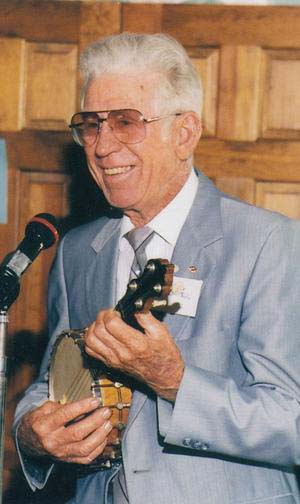
11 Buford Foster
Buford, who lived in Camdenton, had some Miller County ties, especially when he was working with Miller Countians Toliver Lawson and Lee Mace to organize the Lake of the Ozarks Square dance team. Buford was an excellent resource for history of the Lake area; I called him every once in a while to obtain information about various historical events of the region’s past. He was an acquaintance of my father’s sister, Lois Pryor Cunningham, who lived in Camdenton. Lois was married to Lieutellus Cunningham, an attorney who at one time was prosecuting attorney of Camden County.
Here is Buford’s obituary:
Lake News Online
August 28, 2012
Camden County, Mo. —
Buford Franklin Foster, at the age of 93, passed away from natural causes on Monday, August 27, 2012 at the Lake Regional Hospital in Osage Beach Missouri. He resided at his home of many years on Pelican Point, near Camdenton Missouri. Buford was born in his family farm home located near Freedom Missouri on January 15, 1919 to Clyde and Margerie Foster.
He is survived by one sister, Nevin Baker, his two sons, Dan Foster and his wife Nickie, Andy Foster and his wife Tarra, two daughters, Janny Drover and her husband Gary and Josie Mantle.
His wife Anna May and oldest daughter, Becky Risner preceded him in death as well as his older sister Genevieve Jones. Buford had fourteen grandchildren, eight great-grandchildren and literally hundreds of close friends and acquaintances that dearly benefited by his presence.
The Foster family settled in the area in the 1830’s making Buford a fifth generation native to the Ozarks. He graduated from Richland High School in Richland Missouri in the 1930’s and was recognized in his junior and senior years for his assistance in driving the school bus into Richland from Montreal each day. He grew up working the family farm which was located on the Dry Glaze River near Montreal Missouri and later in the early 1940’s pursued a career as a Millwright/Rigger helping to build facilities at Fort Leonard Wood, Missouri and later at Granite City Steel in Granite City, Illinois.
It was there at Granite City Steel, where in 1942 he met Anna May Aerne, who was working at the plant as an industrial nurse. They later married on February 16, 1943 and after a year of living in Granite City they moved to Camdenton, Missouri and began managing the Night Hawk Cafe.
Two years later in 1945, Buford and Anna May purchased the Night Hawk and as Co-owners they operated and successfully managed all aspects of this restaurant for the next 40 years. However, this was just the core center of Buford’s contributions to the Lake of the Ozarks community. With the additions of a banquet hall named ”The Rodeo Room”, a bowling alley, and a gift shop, Buford over the years went on to expand their restaurant into a facility that literally made the Night Hawk complex a ‘melting pot’ for commerce in the lake community.
Buford successfully led endeavors such as one, the children’s square dancing group called the “Lake of the Ozark Tadpoles” who regularly appeared on the nationally televised program “The Ozark Jubilee starring Red Foley” in the 1950s; two, the “Heart of America Square Dance Festival” which successfully attracted thousands of couples and their families to the lake area for 25 years; three, the beginning of the Lake Park camp ground, pavilion and marina, which in itself became a lake area recreational gathering location for travelers and local folks alike; four, authored the book “THAT’S THE WAY IT WAS” that has been widely distributed around the lake and featured short stories about his experiences while growing up in and around the Kinderhook area; and five, it was with great pride in his later years that he was the longest standing member of the Linn Creek Lodge#152 Ancient Free and Accepted Masons. One of his prouder moments was being elected Rajah in 1970 in the Lake of the Ozarks Shrine Club.
In other areas, Buford took the lead or participated in the establishment of the Lake Area Chamber of Commerce, the Lake Association, which evolved into the Lake of the Ozarks Visitors Bureau, the Marine Dealers Association, the Camdenton Airport Expansion Committee, the Camdenton Industrial Development Committee and in the autumn of his time as a spokesmen for the Lake area, met with Senators in Washington DC to bring Union Electric & The Corps Of Engineers together in establishing a dialogue to determine lake level management at the Lake of the Ozarks.
During all this time, Buford also managed to raise his five children, all of whom went on to take prominent leadership rolls in their communities here in the state of Missouri as doctors, nurses, engineers, business owners and real estate brokers. Their success, he has said, was his greatest accomplishment. “We raised a family of Chiefs is what we did”. This is what he frequently said.
Buford Foster was a visionary, an entertainer, an organizer, and a leader of community and private affairs. He was a good friend, a supporting brother and a loving husband of 54 years. He was a wonderful father, a pampering grandfather and storytelling great-grandfather who will be dearly missed by his many friends and family.
We have lost a Lake Area Legend. And, as his book title reads…
“THAT’S THE WAY IT WAS”
Bill Engle of Eldon visited the museum the other day with his family. His sister, Pat Engle Martin and her daughter, Stacey Martin, were researching some Miller County families: Pendleton, Henley, Bunker and Conner (photo 12).

12 Stacey Martin, Gordon Engle, Bill Engle and Pat Engle Martin
Stacey came from South Dakota where she lives now for the purpose of visiting our museum during the Labor Day holiday. Bill has lived all his life in the area and remembers working many years ago for Pryor Novelty Company of Tuscumbia for a number of years.
Other recent visitors were John and Janey (Hamilton) Kinsley of Iberia, both of whom have deep Miller County roots (photo 13).
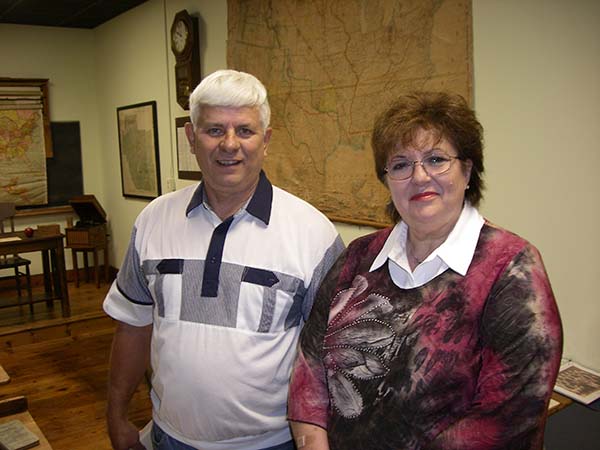
13 John and Janey Hamilton Kinsley
John’s Grandmother was Mary Adonis McCubbin. Janey is a descendent of Miles Carroll, for whom the Iberia G.A.R. was named. G.A.R. is an abbreviation for Grand Army of the Republic. You can learn more about the G.A.R. at this location on our website.
Iberia's post was organized in 1890 under the name of Miles Carroll Post #111. Miles Carroll was a casualty of the Civil War, though not a soldier. While his sons were away from home fighting, bushwhackers rode through southern Miller County and viciously murdered Miles in the front yard of his home in full sight of his wife and daughters.
The Iberia G.A.R. post lasted until 1922 when the building (still standing) was deeded to the newly organized Fremont Watkins American Legion Post #105. The old Civil War soldiers reserved the right to use and access of the Hall.
Among the members of the Iberia G.A.R. were: Charles P. Myers, William A. Thompson, Thomas Marchant, A.L. Benage, Manessah Jones, John Ferguson, George Osborn, Absalom Bear, William Harrison Smith, John Wesley Smith, Simon Deardueff, Henry Carroll, John Carroll, Jeremiah C. Tallman, William R. Short, John E. Dickerson, Nicholas Long, William J. Teaverbaugh, Benjamin D. Roark, John W. Waite, Louis G. Forbes, C.W. Thomas, James W. Rowden, E.D. Hayes, John K. Bond and others.
Here is a photo of the Iberia GAR (photo 14):
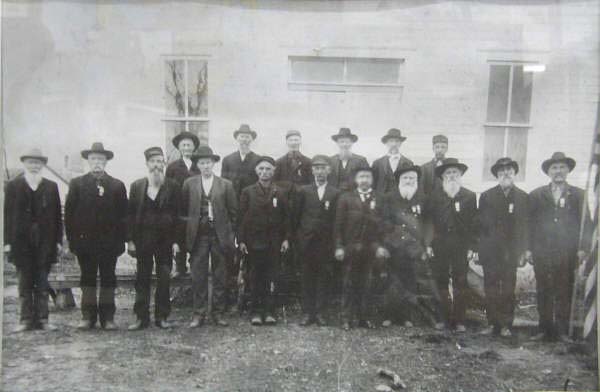
14 Iberia GAR
The names of those in the photo are:
Front Row L-R: Jim Berry, James Cross, Jerry Fallman, Epaminandos Deampird (E.D.) Hays,
Steven Deardeuff, Simon Deardeuff, John Ferguson, Thomas Marchant, Absalom Bear, John Carroll
Back Row: Benjamin Fike, John E. Dickerson, George Teaverbaugh, Joe Crismon, William C. Thompson, John Brown
Absalom Bear, one of those in the photo, was a brother to my great grandfather, David Christian Bear.
This last weekend Tuscumbia celebrated its Septaquintaquinquecentennial which at the time of this writing was yesterday, Saturday, September 8. Hundreds of Miller Countians and friends from elsewhere attended the event which celebrated the 175th year since Tuscumbia and Miller County were chartered by the State of Missouri. Next week I will present many photos taken of some of the highlights and events which occurred.
That’s all for this week.
 Joe Pryor
Previous article links are in a dropdown menu at the top of all of the pages.
|

